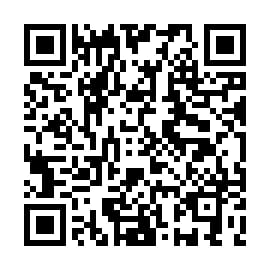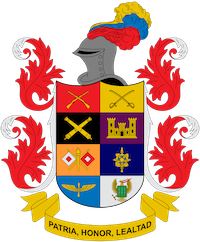Submission Preparation Checklist
As part of the submission process, authors are required to check off their submission's compliance with all of the following items, and submissions may be returned to authors that do not adhere to these guidelines.- The submission is completely original, does not infringe on the rights of other authors, and is of an exclusive nature (has not been published, accepted for publication, or submitted for consideration to another journal), conflict of interest, authorship disputes, and fragmentation (otherwise an explanation has been provided in Comments to the Editor).
- Two independent files (author information page and article structure) were prepared in the original language of the article (Spanish or English) using the formats suggested by the journal Perspectives in Intelligence.
- The two files to be sent are in an editable format such as OpenOffice, Microsoft Word or Rich Text Format (RTF). In addition, they must be fully completed and comply with the parameters established in the instructions for authors (style guide and preparation of the submission).
- The manuscript is within the focus, category and scope of Perspectives in Intelligence, available at https://revistascedoc.com/index.php/pei/about
- All figures and tables included in the structure of the article are in color, in editable format and are located within the text and not at the end of it.
- The DOI (Digital Object Identifier) and web addresses of all references cited in the structure of the article were included, as far as possible.
- The structure of the article has been completely anonymized, eliminating any reference to the author(s), following the established instructions and ensuring a blind review.
- If there are research participants or data were collected from individuals, the institutional endorsement or informed consent duly signed by the participants has been uploaded separately. In addition, a note was included in the Method section explicitly stating how the ethical standards of the research were followed and how informed consent was obtained from the research participants. Without these documents and note the manuscript will not be reviewed.
- Authors: to avoid research misconduct, authors should consult on the following international standards: research fraud, improper experimentation with or on animals and humans.
- The manuscript contains all the required sections and these are structured correctly (see Guidelines for writing the introduction, theoretical framework, method, discussion, conclusions and references sections).
- In the case of including self-citations, these should not exceed 10% of all the material cited throughout the manuscript. Self-citations should be cited correctly, since failure to do so is also considered plagiarism.
- The language used in the manuscript is inclusive, recognizes diversity, conveys respect for all people, is sensitive to differences and promotes equal opportunities.
Publisher
Normally, the editorial is found at the beginning of the publication; it is the first text that readers will see. From it we can contrast the information provided by the other articles and news until we understand in greater detail the orientation of the journal.
The editorial needs to catch the public's attention with a sufficiently attractive entry to awaken interest and keep it until the end of the text. A good beginning should be followed by an easy and always logical development of the commentary, which invariably involves a doctrinal thesis.
Finally, an attempt should be made to end the writing with a punch line that implies a fortunate condensation of the central thought.
Intelligence and Counterintelligence
Intelligence plays a fundamental role in the achievement of Security, as its activity allows the knowledge of several actors and threats, providing an anticipated knowledge of several activities that may alter the stability of the State, managing to neutralize or attack them with a higher degree of effectiveness, reducing the risk and uncertainty for the decision making organisms.
In counterintelligence there is a set of active and passive preventive measures aimed at guaranteeing the integrity of the institution, the accomplishment of the mission and the exercise of command, in order to protect personnel, information, material and even facilities from any external attack.
The need to give a research focus to the field of counterintelligence is due to the fact that although there is an abundance of intelligence and counterintelligence stories worldwide, theorization efforts remain limited, largely because empirical data to build theories are scarce. There are two main barriers to addressing counterintelligence studies, the first is that this branch is used by private entities or political elites, who operate with the utmost discretion; and second, access to sources of information is limited.
Economy
Its objective is to understand that economics is a fundamental instrument in defense planning, as it guides and orients the determination of how many and which resources are necessary to fulfill the objectives of national security.
Students, faculty and any individual interested can contribute and receive feedback from economics, since all the knowledge that is added to it can be transcendent to a government, because it helps to establish which resources are necessary to preserve the national interest and that of the academy, because it assists in the process of articulation of defense economics with political science.
History and philosophy
History makes it possible to know the facts through which social dynamics have produced unique ways of understanding and approaching a social system; and philosophy makes it possible to decipher the mental structure of an era, the concepts, experiences and laws with which relationships with the world, human life and religious life have been explained and valued.
The philosopher is distinguished by being a rigorous reader, by the coherent and reasoned use of discourse and by being eloquent and restless; he is moved by questions that have embedded themselves in his thinking and make him dedicate his existence to elaborate answers that confront his most vital questionings. That is why philosophy needs history to feed its dissatisfaction.
Not every piece of information about the past is a historical fact and, therefore, not every piece of information gives something to be thought by the philosopher who relies on history for philosophical reasoning. The historical fact occupies a place when the historian is able to make it speak, to show its importance in a given epoch. While history and historical facts are indispensable for philosophical reasoning, history would be without substance when it lacks philosophical interpretation. In this sense, history and philosophy go hand in hand.
Administration and finance
It is in charge of planning, organizing and controlling the distribution of the economic resources of a company, organization or State, with the purpose of maintaining profitability and liquidity, and at the same time, preventing any problem that may negatively impact its objectives.
Additionally, it comprises the set of principles, rules, systems, organs and processes that make possible the collection of public resources and their application for the fulfillment of the purposes of the State or public and private entity.
Administration is a social science, whose interest is focused on human organizations, as well as the techniques and procedures available for their planning, organization, management and control of their resources, in order to obtain the greatest possible benefit from them. Finance is a branch of economics that evaluates the use of resources by individuals or organizations. It is a discipline based on methodologies for the correct management of resources, decision making and accounting records of economic activity.
Technology and development
Evaluate from the academic-research environment all dynamics that may cause technological surprise by actors with capabilities contrary to national interests, using the results to develop innovative means and methods of defense, and ensure the highest possible levels of quality in the collection and protection of data present in the electromagnetic spectrum.
As an institution of higher education, it seeks to strengthen the necessary academic bases, product of formative research processes, to develop and innovate technologically elements of electronic warfare that will later allow technological developers in their areas, which may be the students themselves, to create or innovate products, designs, services, processes and specific methods that fulfill the mission of ensuring that the collection and protection of data are in the time and quality required by decision makers, thus minimizing, first, the technological surprise, and second, the levels of uncertainty at the time of data processing among others.
The way to achieve this is by creating products, designs, services, processes and methods, all technological, for each of the phases that involve electronic warfare in order to safeguard national interests, all from the academic and research activities of students and teachers.
Articles
The journal Perspectives in Intelligence publishes only articles resulting from scientific and technological research in three languages (Spanish, English and Portuguese). These are defined by Publindex-Minciencias as the original academic document that presents in detail the results derived from completed research or technological development projects with a minimum of 25 cited bibliographic sources.
Research articles: this type of article presents in detail the original results of research projects; its structure includes introduction, methodology, results and conclusions.
Reflection articles: this type of article presents research results from an analytical, interpretative or critical perspective of the author(s), on a specific topic, using original sources.
Review articles: this type of articles should be the result of a research where the results of published or unpublished research on a field of science and technology are analyzed, systematized and integrated, in order to account for advances and development trends; it should present a careful bibliographic review of at least 50 cited bibliographic sources.
Geopolitics and Geostrategy
It is based on geopolitical and geostrategic constructs framed in the development of intelligence in order to preserve the interests of the Colombian State. It seeks to provide conceptual and analytical tools that allow understanding the development of intelligence activities, as well as interpreting and deepening the analysis of events that shape the current world.
It responds to the demands of an increasingly interdependent globalized world with immediate response capacity to security problems in the States, being the intelligence activity of vital importance to preserve national objectives, the scope of this is to provide knowledge and generate doctrine in geopolitics and geostrategic to contribute to political and military decision making in a national and global context.
It is important because it strengthens research by providing study tools to develop an explanation of the world order and the power of the State, by interacting political science and geography in the search for a reflection of space in ideas or facts, which would allow students, teachers and researchers to propose political action guidelines based on the geopolitics of the environment and geostrategic thinking.
Economy and Defense
Economics and defense is a discipline derived from economic knowledge, applied to a specific state function, which uses interdisciplinary approaches for the analysis of the economic relationship in terms of the budget invested in defense. In addition, this discipline makes use of statistical and economic tools that allow the analysis of the relationships between the institutions and organizations that make up the defense sector and the third sector (civil society). Likewise, it allows the development of knowledge that allows the proper administration of resources, both in times of war and peace.
CounterIntelligence
Counterintelligence in its disciplinary knowledge seeks to apply methods that impede and prevent the action of enemy intelligence, covering key points such as physical security that involves security in a building, in an area, among others, in order to clear threats; on the other hand, personnel security consists of conducting a security study of new employees and their periodic reinvestigation; finally, operational security is in charge of keeping matters private, thus blocking any enemy attempt of extortion. Therefore, detection, localization and neutralization practices can be deduced as vital tools of the object of study of counterintelligence.
Copyright Notice
Copyright 2022 Journal Scientific Perspectives on Intelligence
![]()
This work is licensed under a Creative Commons Attribution-NonCommercial-NoDerivatives 4.0 International License.












